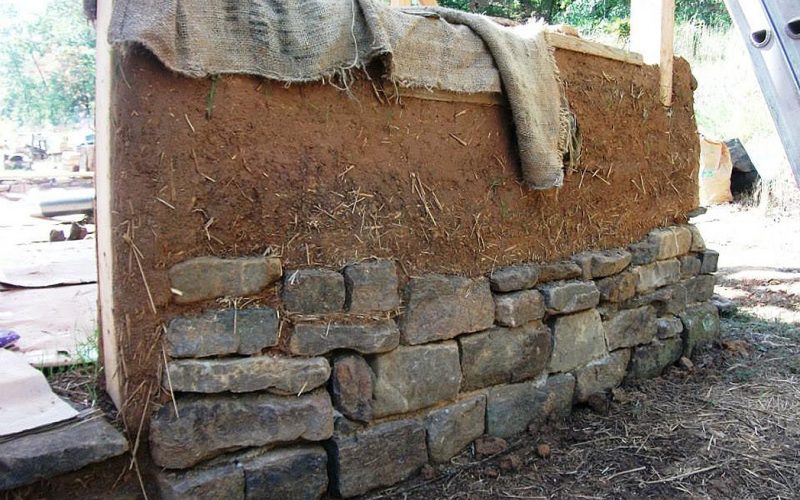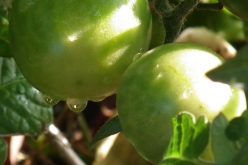
Attendees of the cob workshop apply the cob mixture to the wall of what will be Laura and Dan’s home in Winslow.
By Amanda Bancroft
“Cobbing” can mean a variety of things depending on who you ask: it’s a term for spanking among some sailors, a musical term for a piece that tries to sound complex but is actually boring, a foul in the game of Quidditch in Harry Potter, and other, less printable definitions. Don’t ask! But one popular meaning is inspiring people to think of their home as an artist views a sculpture.
Cobbing is an ancient building technique that’s been recently revived and touted for its sustainable use of clay, sand, straw, water and earth mixed together. It’s inexpensive, fireproof, and a way to bring the community together. While the original cob-stompers may have been Oxen (in England), a modern-day cob stomp is a social gathering for families, similar to an Amish barn raising. You don’t have to yell at the kids not to get muddy, since that’s a main point of cob building – closeness to the earth and one’s creativity.
Cob has been used to build pizza ovens, saunas, benches, and especially adobe-like sustainable homes which can be found around the world as well as right here in Northwest Arkansas. Joy Fox has been using cob for 15 years at Wattle Hollow, and Laura Kelly and Dan Dean are building a cob cabin at Windberry Farm. Ripples might use cob to cover the earthbag walls and create shelves or benches by hand, with love and respect for the Earth.
Why build with cob? It can resist seismic activity, eliminate the need to take out a mortgage to own a home, and old cob buildings are still standing on almost every continent. Thick cob walls are good thermal mass, and as long as a good foundation and large roof overhangs are present, cob can last a long time even in the Ozarks. Because no chemical materials are used in its construction, a cob home has healthier air quality and is even recommended to reduce indoor allergens for people suffering from allergies. “We have made shelters this way for so long that we may carry a genetic memory of how to do it,” says Ianto Evans, author of The Hand Sculpted House.
Sounds perfect! But it’s not. Thermal mass isn’t the same as insulation. In colder climates and wintertime, cob homes can get chilly and allow heat to escape – not a very energy efficient choice. Michael Smith, an environmental engineer who worked with Ianto Evans and is also the author of The Cobber’s Companion: How to Build Your Own Earthen Home, states that cob “has great thermal mass but poor insulation value.” He offers many recommendations, including combining cob with straw bale for north-facing walls, and using it only on interior walls or south-facing exterior walls. Visit GreenHomeBuilding.com for more tips on sustainable design.
Ripples is a 100% solar-hosted website that includes a blog, newspaper column, resources and services for individuals and non-profit organizations. Read more on this topic and others at www.RipplesBlog.org.











